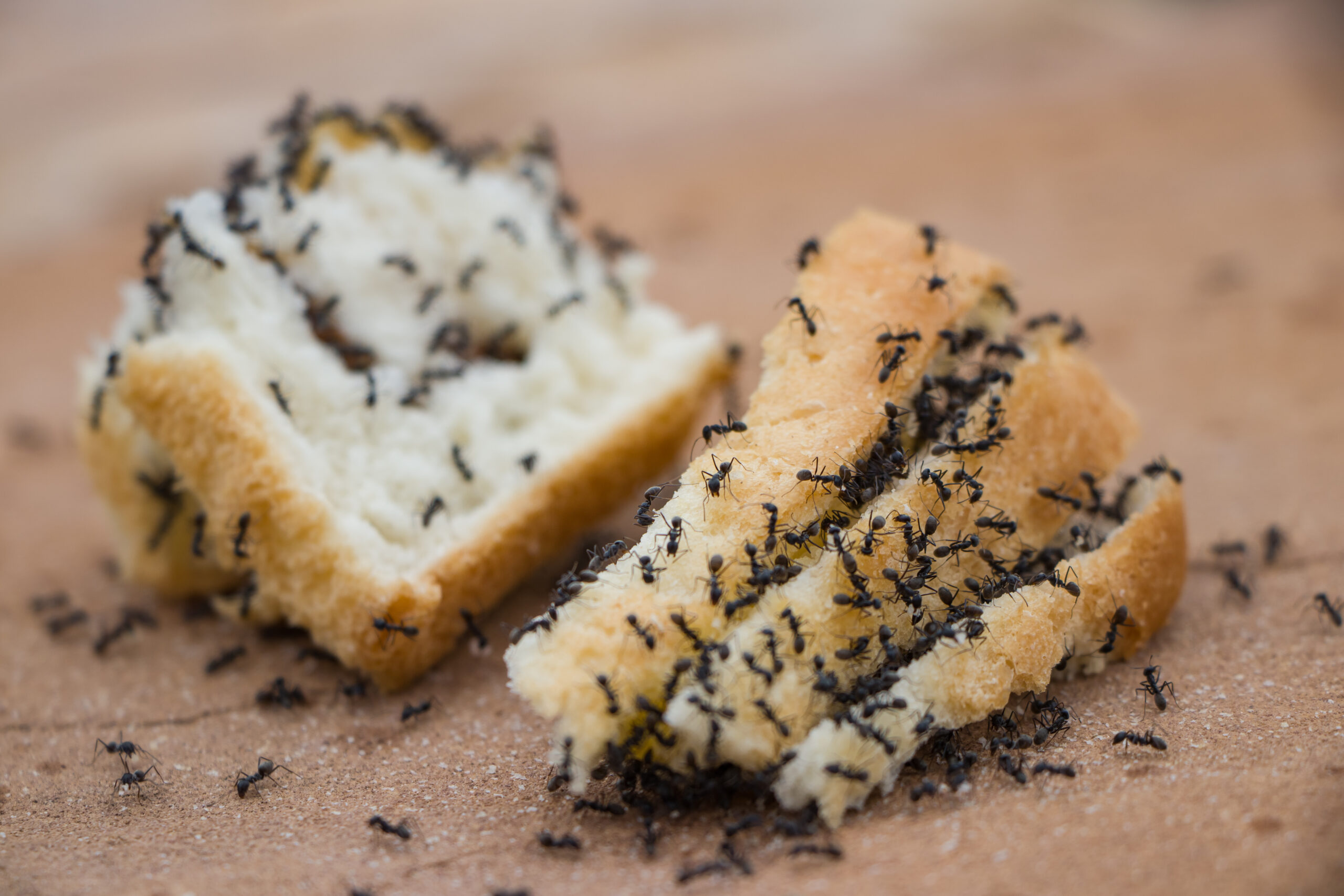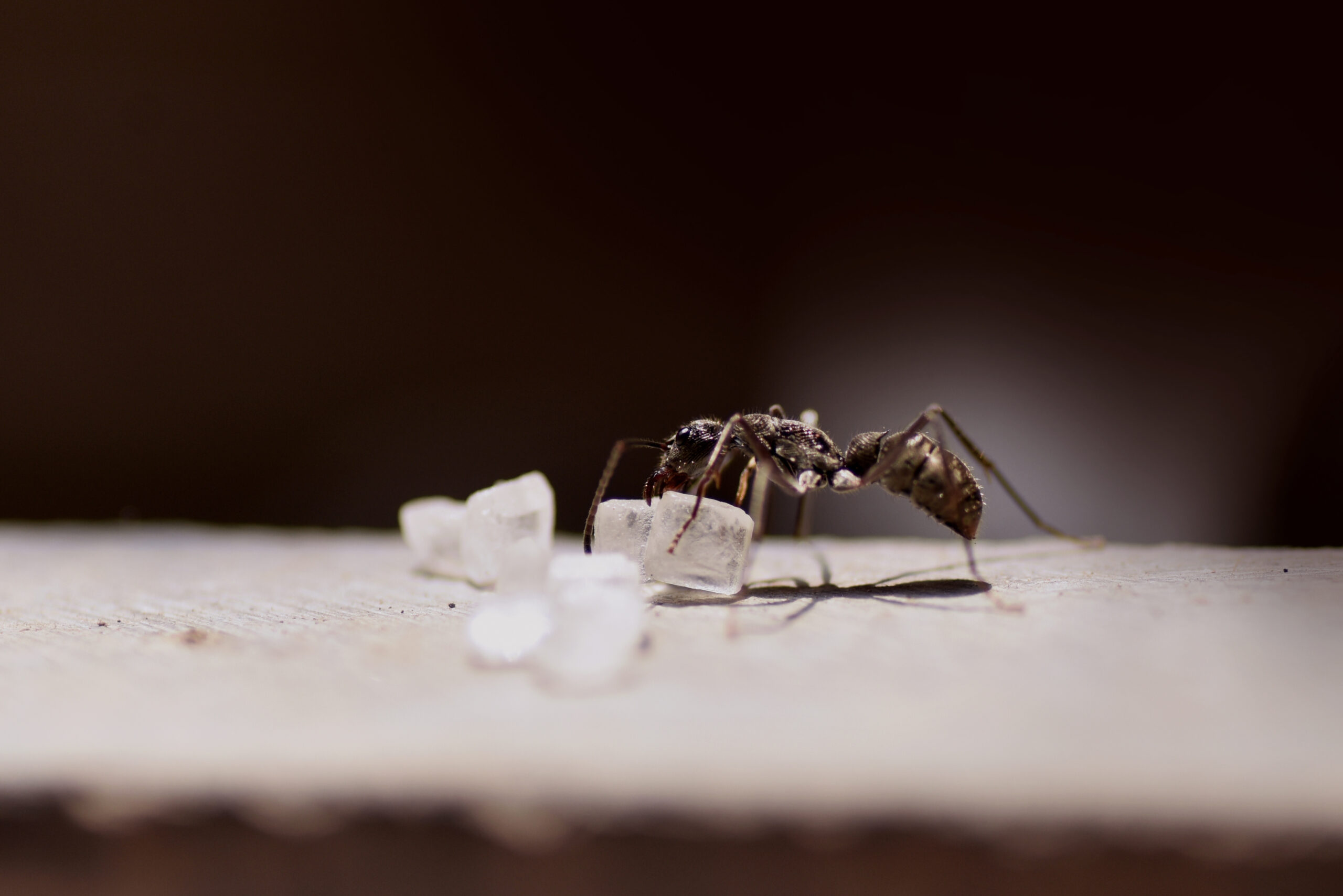The most common ant control challenge Janssen Pest Solutions solves is that of the odorous house ant, affectionately called OHA’s by our team. These tiny creatures are a common challenge across much of the United States, known for their distinctive rotten odor when crushed. Here’s what you need to know:
Characteristics of Odorous House Ants in Iowa
Size: Typically ranging from 1/16 to 1/8 inch, these ants are generally monomorphic, meaning all members are approximately the same size.
Color: Their body color varies uniformly from shades of brown to black.
Antennae: OHA’s possess 12-segmented antennae without a club.
Thorax: Their thorax is uneven, featuring one hidden node on the pedicel.
Anal Pores: Unlike some ant species, OHA’s lack a circle of hairs at the anal pores.

Behaviors of Odorous House Ants in Iowa
Foraging Patterns: OHA’s are opportunistic foragers, searching for food both indoors and outdoors. Although they primarily favor sweets, they also scavenge for grease and dead insects, making them adaptable survivors in various environments. Indoors, they are attracted to sugary substances, grease, and protein-rich foods. Outdoors, they scavenge for dead insects and sweet plant secretions.
Breeding and Nesting: These winged reproductive ants typically emerge in May, marking the start of their breeding season. OHA’s exhibit a preference for nesting indoors, especially in environments conducive to moisture and warmth. These resourceful ants reproduce prolifically, with colonies often numbering in the thousands. Common indoor nesting sites include areas near dishwashers, pantries, countertops, pet food bowls, and cabinets.
Colony Structure: Unlike some ant species, odorous house ant colonies can contain multiple queens, a trait known as polygyny. This feature contributes to their colony’s resilience and ability to rapidly expand their population. Having multiple queens enhances genetic diversity within the colony, which increases its overall adaptability to changing environmental conditions and threats. This complex social structure allows odorous house ants to thrive in diverse habitats and outcompete other ant species in Iowa.
Defense Mechanisms: When threatened, odorous house ants have an interesting defense mechanism. They release a characteristic odor, often described as a rotten coconut smell, which serves to deter predators and potential threats. Additionally, they may emit warning signals by rapidly moving their antennae as a form of communication to alert other colony members of danger. This coordinated response helps the colony to effectively defend itself against threats.
Pest Status of Odorous House Ants in Iowa
While odorous house ants do not pose significant health risks to humans, they can quickly become a nuisance when they invade our living spaces. They can contaminate food and surfaces, and the foul odor they emit when disturbed only adds to the frustration of dealing with them. Moreover, their sheer numbers and ability to establish satellite colonies make them a formidable foe for homeowners attempting to rid their homes of these persistent pests.
Controlling Odorous House Ants in Iowa
The most effective approach for managing OHA populations in Iowa involves the expertise of a well-trained technician. Through an integrated control strategy, technicians employ a combination of bait and non-repellent insecticide technologies. This method ensures both safety and efficiency in eradicating OHA infestations, safeguarding homes and businesses from their pervasive presence.Do you suspect an OHA infestation on your property? Contact us today to schedule an appointment with our skilled technicians and experience the most effective pest management strategy in Iowa!

